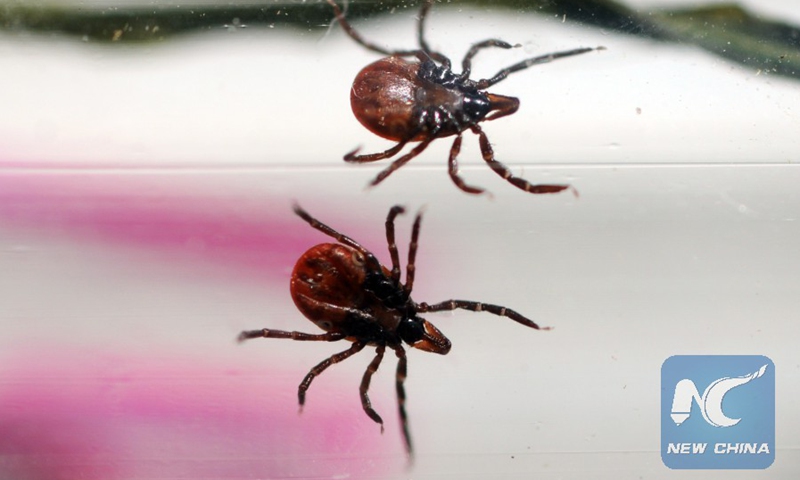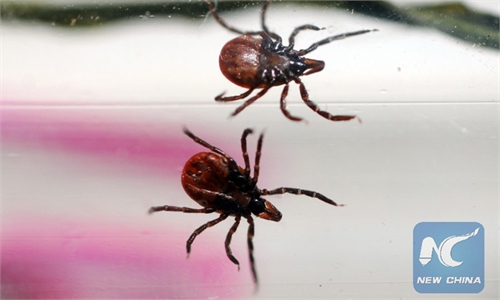Novel bunya virus infection caused by tick bites can pass from person to person: expert

Photo of ticks in lab. Photo: Xinhua
A total of 37 people in East China's Jiangsu Province have been diagnosed with Severe Fever with Thrombocytopenia Syndrome (SFTS) this year, a disease caused by the novel bunya virus which is spread by ticks. Experts have warned that the virus can be transmitted from person to person.
Based on previous cases, the virus can be transmitted from infected animals or people to others via blood, respiratory tract and wounds, Sheng Jifang, an expert on the novel bunya virus and director of the infectious disease department with the First Affiliated Hospital of Zhejiang University School of Medicine, told the Global Times on Wednesday.
Sheng mentioned that a patient who was infected with the novel bunya virus three years ago and died later had infected 16 people that had contact with the patient's dead body as the patient had bleeding because of severe infection. One of the infected people later died.
Therefore, medical staff and family members of patients should take necessary preventive and protective measures, Sheng said. She also suggested people should not go into the jungle or bushes. "Fortunately, ticks can't fly. It should be safe just to avoid their territory," Sheng said.
Ticks, from larvae to adults, feed on the blood of warm-blooded animals, according to Sheng. Novel bunya virus infections increase significantly in summer when the ticks breed actively. Therefore, the tick-borne virus could possibly cause a local epidemic.
Sheng said the novel bunya virus, which was first discovered in 2009 in Central China's Henan and East China's Anhui provinces has a fatality rate of 1 percent to 5 percent, and older people are more likely to get sick and die. There is no vaccine or specific medicine targeting the infection, so people need to get treatment as soon as possible once they are infected with the virus.
"The early symptoms are fatigue and fever; sometimes there will be a rash," Sheng said.
The clinical manifestations of SFTS mainly include fever, lower quantities of platelets and white blood cells, and multi-organ dysfunction. Patients with mild cases of this disease can mostly heal themselves, but patients with severe cases often suffer from multi-organ dysfunction or even multi-organ failure.
Ticks are mainly found in mountainous regions, as well as areas where there are wild animals, Leng Peien, director of the vector control division with Shanghai's Municipal Center for Disease Control and Prevention, told the Global Times. Some wetlands and forest parks in the city are also habitats for ticks.
So far, the novel bunya virus infections that have been discovered are mainly caused by tick bites, Leng said.
Ticks can carry many disease-causing viruses, such as Lyme disease and Tsutsugamushi disease, Sheng said. The insect is frequently seen in northeastern and southern regions of China.
Lu'an in East China's Anhui Province confirmed on July 11 that the tick-borne infectious disease SFTS has caused five deaths and hospitalized 23 people in Jinzhai county of the city since April. Qingdao in East China's Shandong Province also reported four deaths, according to a media report in July.

